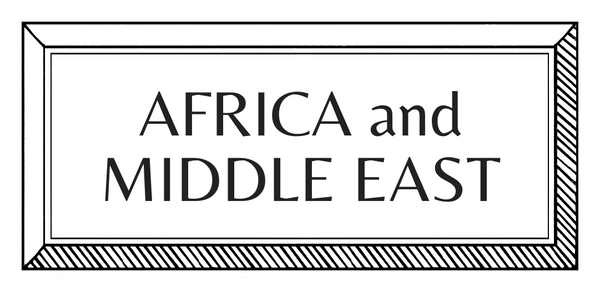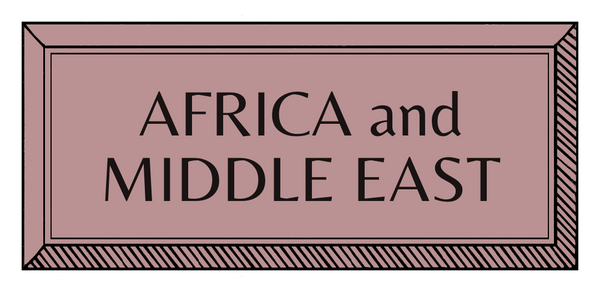CRAFT STORIES | AFRICA | GHANA | TEXTILES
The Story of Ghanaian Kente Cloth

Each weave of Kente cloth tells a unique narrative. Like fingerprints, the intricate threads serve as distinct signatures for individuals among the Asante and Ewe tribes of Ghana, West Africa. Each thread of Kente conveys a story, encapsulating the essence of West African heritage by vividly representing societal values, spiritual beliefs, and intellectual traditions. Crafted in Africa by specialised artisans, Kente textiles are rare emblems of cultural significance. Cabana discovers the story behind Kente with unique insights from Glasgow and Ghana-based Tribal Art and Textiles dealer Ian Shaw.
The Legend of Kente Textiles
According to a famous legend, Kente textiles originated from a spider’s web. Two men discovered a beautiful web with a layered blueprint design that shone in the starlight. The spider, Ananse, taught them how to weave these intricate designs in exchange for favours. After completing their tasks and mastering the art of weaving with a single thread, the men returned to Bonwire, a town in the Asante region of Ghana, known as the birthplace of Kente craftsmanship. They shared their discovery with Asantehene Osei Tutu, the first ruler of the Asante kingdom. The Asantehene adopted their creation, Kente, designating it as a royal fabric for special ceremonies. Consequently, Bonwire became the premier centre for Kente textile technique for the Asantehene and his court.
Royal Origins
Kente cloth originates from weaving traditions dating back to the 11th century. By the late 1500s, the powerful Asante empire began incorporating colourful silk fabrics brought by traders from Italy, India, and North Africa. By the early 1700s, the Asante unravelled these imported fabrics, reweaving the silk threads into elaborate textiles for the royal court. The dramatic colours and intricate patterns of Kente have been celebrated ever since.
Kente textiles were “initially reserved for royalty and sacred ceremonies; Kente's intricate patterns and vibrant colours epitomised wealth, status, and cultural sophistication.” The cloth also holds spiritual significance and is often found in Asante and Ewe shrines to honour deities.

Detail of a man's cloth, Ewe people, eastern Ghana or southwest Togo, early to mid-20 Century. © HALI Issue 186.
The history of Kente is deeply intertwined with West African weaving traditions, evolving through extensive trade networks. In the 18th century, these networks introduced luxurious materials like French and Italian silk, which, combined with local cotton and wool, gave rise to the distinctive Kente fabric.
Once under Asante rule, the Ewe people adopted Kente weaving, adding their unique interpretations. “The populace who could afford a weaver would only have one dedicated craftsman. The wealthier Ewe and Ashanti tribes had many Kente weavers who could command any price they liked due to their intricate skill,” explains Ian. Unlike the centralised Asante, Ewe Kente was more widely used and associated with prestige and special occasions, but not limited to royalty. Ewe Kente cloth featured a broader range of patterns and meanings, often reflecting everyday life rather than social hierarchy. These unique interpretations add to the diversity and intrigue that Kente cloth retains today.
Decoding the Colourful Thread
"What is so special about the artisanal practice behind Kente cloth is that no two are the same," asserts Ian. Each colour in Kente carries ritual significance, woven on narrow vertical strips typically four inches wide. These strips are sewn together to form larger pieces, allowing the patterned blocks to create a unified meaning. The threads in Kente tell an individual’s story, like a physical life map. Floating motifs such as 'the hand of friendship' and 'Guinea Fowl' indicate the owner's high-ranking status. This technique and the colourful hues make Kente textiles incredibly special.”
Historically, all hand-spun cotton used for Kente was dyed with natural dyes until the 1940s. “These dyes, derived from berries, fruits, and roots, produced vivid colours, including the iconic indigo from pomegranates.” Among the Ashanti and Ewe, two predominant African groups, bright and autumnal hues were favoured, respectively.
Weaver might know hundreds of patterns by heart, each named for proverbs, chiefs, queen mothers, or historical events. Customers often choose Kente cloth based on the symbolic meanings of these names, ensuring the tradition remains rich and meaningful.

Detail of Asante silk kente cloths, Ghana, 19 century. © HALI Issue 168.
Kente Cloth Today
Historically, Kente for royal courts was made of silk, but today, it can be found in cotton and rayon blends as reproductions. However, online auctions and specialist antique dealers “are significant assets in this field when sourcing this specific textile.” Today, Kente textiles not only inspire decor and fashion but also ignite creativity. Last year, designer Aristide Loua debuted at Lagos Fashion Week, showcasing his wearable artworks from his ready-wear-brand Kente Gentlemen. At the same time, the Victoria & Albert Museum curated an exhibition dedicated to wearable African fashion with a spotlight on Kente. Within decor, the late Ghanaian artist Atta Kwami's published home showcased Kente cloth as textile wall art, throws, and bedspreads. “Many of my clients are finding innovative ways to showcase Kente in the home. Often, it is the piece that stands out, with its layers both physically shown through colour and metaphorically woven, Kente remains vibrantly unique.” The British Museum holds one of two ‘Royal Asante Kente cloths’ crafted by weaver Kwasi Amwah in 1935. Equally, the Minneapolis Institute of Art held an essential exhibition deconstructing the art of traditional African textiles.
Kente cloth can be purchased through antique dealer Ian Shaw, a Glasgow and Ghana-based Tribal Art and Textiles dealer.
Words by Emma Becque
Images from HALI and





































